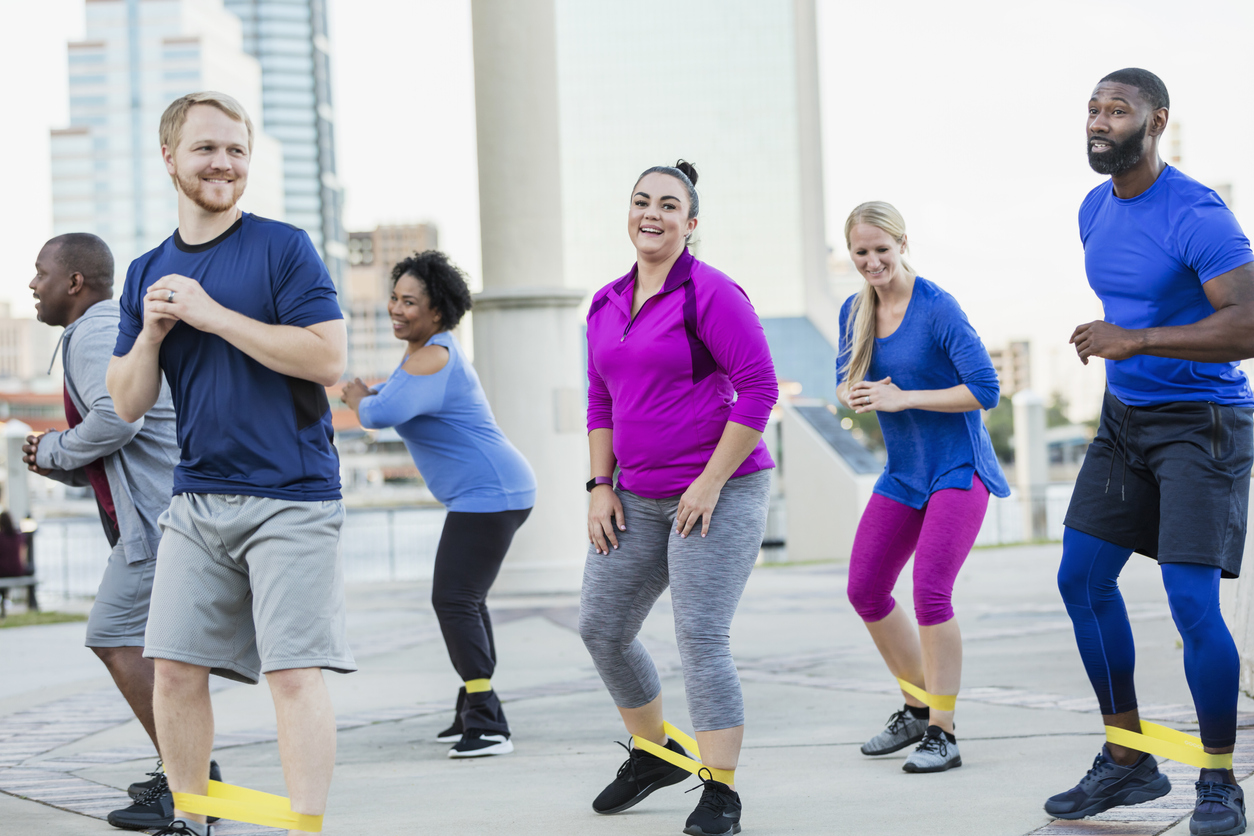Twenty nineteen is upon us and New Year’s resolutions are on many people’s mind. It is common that goals are oriented around body shape or weight loss, which we have found can sometimes cause more harm than good. If you want to practice from a Health At Every Size® paradigm, these size goals will not align. (1) So, if not focusing on weight loss, then what?
What are some goals we can encourage from a perspective of Health At Every Size, all year round, without pushing the thin ideal? Below, I have compiled five ways to help focus resolutions and intentions that promote health and well-being without focusing on weight loss.
- Develop a healthy relationship with movement. What are the motives behind moving? Discourage movement as a form of compensation that is motivated by guilt. Instead, focus on the ways in which it can enhance and enrich their lives. This includes, but is not limited to, better sleep, stress reduction, and improved overall sense of well-being. (2)
- Find movement that is enjoyable or helps to do what is enjoyed. When we were younger, the way we moved our body was defined as “PLAY.” Somewhere along the line, we moved from play to exercise. For many, a negative connotation can come along with this as it turns into an obligation or chore. If something is not enjoyable it is much harder to stick with long term. Let’s help turn the focus to enjoyable movement. Maybe what they do with a personal trainer or in a group fitness class is that enjoyed movement or maybe you help them focus on ways exercise can help them do what they enjoy better, such as build endurance to keep up with their grandkids, find balance to nail that yoga pose, or improve their strength and flexibility to rock climb.
- Find movement and a routine that makes them feel good. If someone is newer to exercise or returning, they may need help figuring out how it works into their schedule and life. Guiding and supporting them to find when it works best for them, what feels good and what doesn’t, as well as what they are hoping to get out of it can be challenging at first. It’s important to listen to them and encourage them to listen to their own body to figure out what works both physically and mentally, while supporting the first two points above of developing both a healthy relationship and finding joyful movement.
- Meet them where they are and focus on the benefits of exercise that have nothing to do with weight.* We know that moving the body is good for you with benefits that go way beyond weight loss. Highlight and discuss the importance of these improvements, things like better cardiovascular function, decreased risk of certain diseases, stronger bones and muscles, and increased longevity. In a meta-analysis of ten studies, it was found that mortality risk was the same in spite of BMI in fit individuals. (3)
- Encourage self-compassion when it comes to movement. Developing new habits and routines is never easy. Keeping routines during busy times can be plain difficult. Sometimes situations come up that truly prevent movement and that has to be okay. Missing a day, a week, or even a month of training, exercise, or routine movement alone cannot determine someone’s health. Overall it’s patterns that do. If something comes up and a person cannot make their sessions, we should help them know it is important to not feel guilty. Health and exercise are not moral issues. It is a self-care routine they can choose to pursue if they want and we are here to help guide them.
Movement has a multitude of great benefits. Enrich your client’s lives and experiences by helping them to identify a goal that can truly result in positive outcomes. We are in the fortunate position to help them discover and achieve these goals.
*With incorporating movement and exercise, weight loss may happen –or it may not– and either result is okay. Health At Every Size is not anti-weight loss. It is against the pursuit of weight loss through medically unnecessary restrictions.
References
1. Aphramor, L. Bacon, L. (2013) The HAES ® files: Stress Mess: How “Fighting Fat” Makes People Sick. Retrieved from https://healthateverysizeblog.wordpress.com/2013/09/27/the-haes-files-stress-mess-how-fighting-fat-makes-people-sick/
2. Bacon, L. (2010). Health at Every Size: The Surprising Truth About Your Weight.
New York, NY
3. Barry, V.W., Baruth, M, Beets, M.W., Durstine, J.L., Liu, J., Blair, S,N. (2014) Fitness vs. Fatness on All-Cause Mortality: A Meta-Analysis. Progress in Cardiovascular Diseases. (56;4)
















